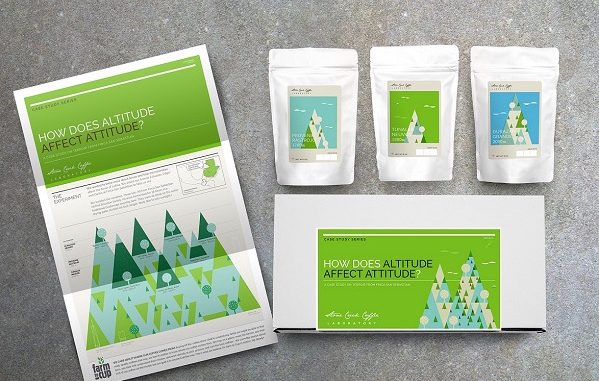
Stone Creek Coffee Roasters Continues Its Case Study Series with an Experiment on Altitude to Understand Terroir

Terroir is typically understood as the unique variables of an area that affect the crops grown there. It was originally a term used when discussing wine, but the effects of local environments of course also have a tremendous influence on coffee. The difference in soil composition, rainfall, microclimate, sunlight, temperature, and elevation are among the largest variables that affect flavor and quality in the cup. So looking to get deeper into understanding terroir, the folks at Stone Creek Coffee tried to isolate just one factor: elevation, and see what its affect on flavor is.
So how does the elevation of a coffee plant affect the flavor and quality of its cherry? We know that generally the higher grown the better. But can we determine anything in more depth than that? The team at Stone Creek Coffee in Milwaukie, Wisc. sought to understand the affect elevation has on coffee a little better, so with the help of coffee farmers at Finca San Sebastian in Guatemala, they’ve conducted an experiment.
They selected three lots, all of them Red Bourbon, and had them all processed the same way, fermented 36 hours in a washing tank, and dried on the same patio. The difference in the lots was one simple factor: elevation. The lots were selected from 1500m, 1700m, and 2000m. (The one note they make about where the coffees differed in their treatment is that the 1700m lot took a lot longer to dry. They hypothesize that that was due to the fact that it received less sunlight.)
This is what they have to say about the three different lots:
1500m: This altitude is the money-zone for specialty coffee producers. It’s high enough to get the coffee buzzin’, but low enough to make production easier and more reliable. Our San Sebastian posse in Antigua grows some of the most awesome and consistent Red Bourbon on their lots from 1450-1600m. This coffee ran as the first BONESHAKER espresso in 2014, then came for an encore in 2015 as our seasonal œGuatemala: San Sebastian . Big Chocolate, Big Cherry, Big NomNomNom.
1700m: This lot from Estuardo Falla and the crew at San Sebastian is high, it’s just not trippin’. It’s the designated driver of high-altitude lots. The quality is as dope as the higher 2000m; still 100% Red Bourbon. This was picked from an area of the farm called Porvenir Rastrojo. The viscosity on this cup isn’t quite as big and slick as the 2000m, but the acidity is pronounced and sweet, more nuanced than the 1500m. In the cup, you’ll notice notes of caramel, ripe cherry, and sweet orange.
2000m: This lot is the highest Bourbon at San Sebastian. It’s higher than Marley on his home turf. Grown near the Villa Lobos œRing of Fire lot, this is as close to volcanic eruption as coffee will grow well. Picked from an area of the farm Durazno Grande, located at 2000 meters above sea level, the coffee is fully washed and patio dried like all coffees from San Sebastian. In the cup, you’ll notice notes of caramel, bing cherry, subtle lemon, and loose Guatemalan vibes.

The Case Study Series on Altitude is available from the Stone Creek online store for $25.00. It includes:
- 1 Half Pound of Guatemala San Sebastian: 1500 m
- 1 Half Pound of Guatemala San Sebastian: 1700 m
- 1 Half Pound of Guatemala San Sebastian: 2000 m
- 1 Instruction Guide
Previous Case Study Series from the inquisitive minds at Stone Creek have explored honey processing, different processing methods on the same coffee, and the same coffee roasted three way.
And so what was the ultimate ruling on how altitude affects the coffee’s flavor? Well, in the cup it wasn’t always altitude that won out. Instead the most notable correlation noticed between the coffees with the highest cupping scores was the fat content of the beans. Fat content typically rises as elevation increases (and also increases with shade-grown coffees), but it’s not necessarily direct or uniform in its relationship.
Sounds like another experiment is in order!

